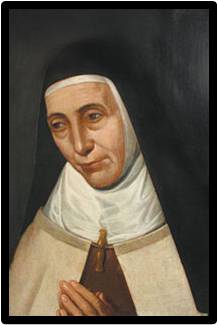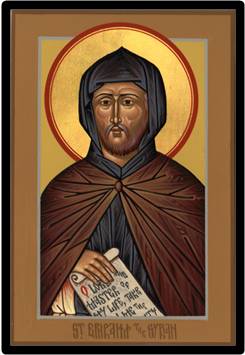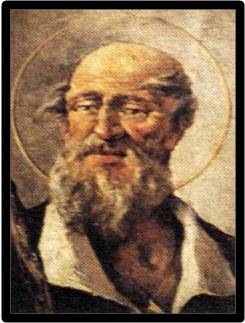JUNE 7 - BLESSED ANNE OF ST. BARTHOLOMEW

Anne Garcia was born at Almeneral, in Spain and was the daughter of peasants. She was a little shepherdess who took care of sheep until she was twenty. Four miles from her hometown was Avila, the city where St. Teresa and her Carmelite nuns lived.
Anne asked and was accepted into the order as a lay sister rather than a cloistered nun. The cloistered nuns were not allowed to leave the convent but Sister Anne could go out on errands and take care of the needs of the community.
For the last seven years of her life, St. Teresa chose this sister, Blessed Anne, to be her traveling companion. St. Teresa went around to visit the communities of nuns. Sometimes she started a new convent. Sometimes she helped the nuns become more enthusiastic about the wonderful life they had chosen.
St. Teresa loved Blessed Anne and praised her to the other nuns. Although Blessed Anne did not have the opportunity to go to school, she knew how to read and write. She wrote about her adventures with the wonderful St. Teresa. Blessed Anne was with her when she was dying and St. Teresa died in her arms.
Blessed Anne’s life continued quite normally for six years after St. Teresa’s death. Then the superiors decided to open a new convent in Paris, France. Five nuns were selected to go and Blessed Anne was one of them.
While the people of Paris were warmly greeting the nuns, Blessed Anne slipped into the kitchen and prepared a meal for the hungry community. In the end, four of the five nuns moved to the Netherlands. Anne remained behind because she had been appointed the Prioress or Sister Superior of the convent at Tours.
Anne reminded the Lord that most of the young French women joining the convent and their community were from rich, noble families. She explained to him that she was only a shepherdess and did not think she was worthy of being their superior. Within her heart, Blessed Anne heard the Lord’s answer: “With straws I light my fire.”
Anne was later sent to the Netherlands to start more new convents. She went first to Mons and then to Antwerp in Belgium. The young women who came to join the Carmelites thought of Anne as a saint. Anne finally died in Antwerp in 1626.



